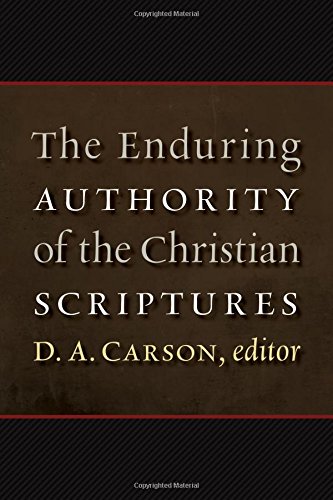A Brief Book Summary from Books At a Glance
Editor’s Note: Today we continue our series of “bonus” summaries covering all thirty-six chapters of the monumental volume, The Enduring Authority of the Christian Scriptures (D.A. Carson, ed.).
Chapter 11: The Old Testament Canon, Josephus, and Cognitive Environment
Stephen G. Dempster
(Summarized by Mark Coppenger)
Dempster is dissatisfied with the prevailing conviction that the Old Testament canon was still evolving in the 4th century AD, a “minimalist” position put forward in Lee McDonald’s popular textbook, The Biblical Canon: Its Origin, Transmission, and Authority (Hendrickson). Rather, he prefers the “maximalist” view, which he connects with Josephus, a contemporary of Christ, who set forth a 22-book canon in Against Apion. Therein, Josephus said that the worthy texts were written during the Moses-to-Artexerxes period. Furthermore, “It is innate in every Judean right from birth, to regard them as decrees of God, to remain faithful to them and, if necessary, to die on their behalf.” He calls Josephus’s claim “the elephant in the room,” a statement inconvenient to those who postulate canonical chaos in the First Century.
Those disagreeing with Josephus want to marginalize the writer, but Dempster insists that he perfectly represented the cognitive environment in which all parties—apocalyptic (Qumran, Christianity); traditionalist (Pharisees); revolutionary (Zealots); establishmentarian (Sadduccees)—moved. This view is nicely reflected in Jesus’ conversation with the men he encountered on the road to Emmaus after his resurrection. In this connection, Dempster notes that Jesus used the word ‘all’ three times in this short exchange, “suggesting a complete corpus of sacred writings”: Jesus spoke of “all that the prophets had spoken,” of “Moses and all the prophets,” of “all the Scriptures.” Furthermore, he followed the traditional tri-partite division of. . .
[To continue reading this summary, please see below....]The remainder of this article is premium content. Become a member to continue reading.
Already have an account? Sign In
